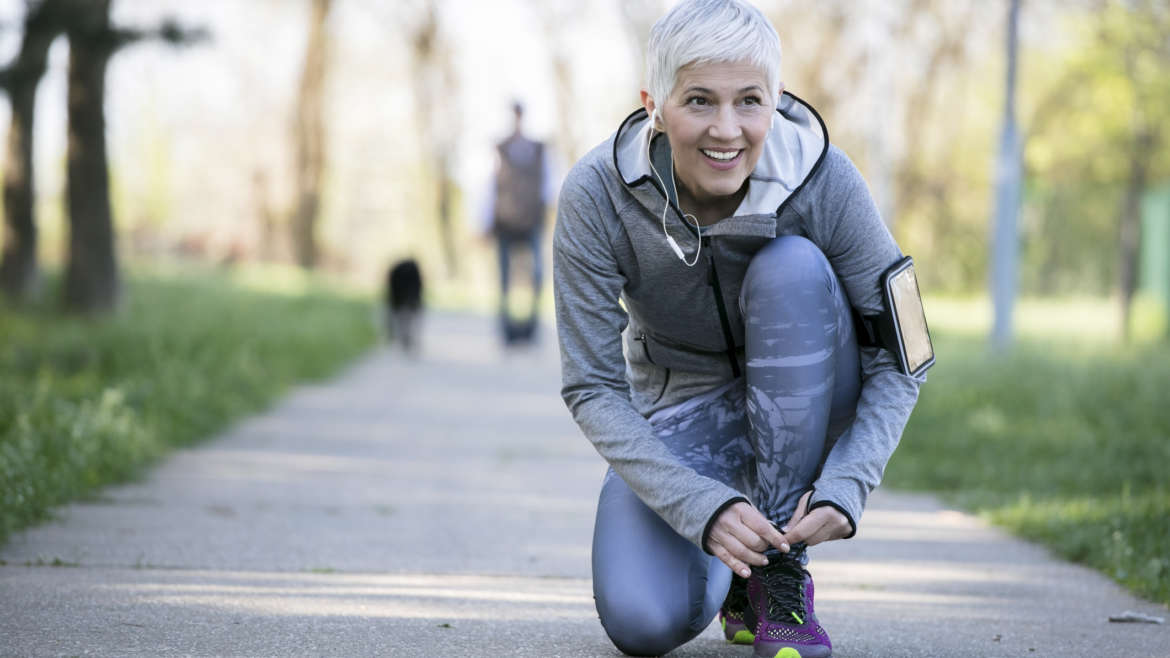There are many reasons why you may have taken a break from sport and fitness: illness, injury, childbirth, or a change in lifestyle or location. Whatever the cause, it’s great that you’re ready to return and build it back into your daily life. To make sure you get the most from your new routine and can keep at it, it’s important that it works for you now.
Here are some tips to help you build sport and fitness back into your life.
Easy does it
The most important factor for any return to fitness is to take it slowly. Particularly if the reason for your break was injury-related. If your sport is running, for example, there’s absolutely no point trying to run 26.2 miles within a month of starting again. You can’t pick up where you left off. Not only are you likely to pick up several injuries but you will quickly become disheartened that you can’t actually do the distance. And once you’re disheartened, you’re likely to throw in the towel and give up. So be realistic about how much training to do.
A good rule of thumb is to add no more than 10% extra each week. Strength takes the longest time to return so building up gradually will see the best results. Don’t think you must add on 10% more distance or lift 10% heavier weight. The overriding thing here is to listen to your body. If you feel fatigued or have a bit of a niggly pain coming on, pull back on the quantity. Quality is key.

Set a target
It’s a great idea to have something to aim for on your return – it will really incentivise you to keep your routine going. Again, be realistic! Entering a 100km bike ride within four weeks of getting back on your bike is not. Try a smaller distance, or something further away, time-wise. Or have series of milestones to aim for.
It might work for you to begin your training with exercise or sports you are familiar with. You will feel more comfortable doing things you know how to do, and it will help build your base fitness back up. Then consider trying new things to mix it up a bit.
Find a friend
Training with a friend has several benefits. There’s accountability, because once you arrange to meet up for a training run, ride or workout, you’re less likely to cancel or not bother. Companionship is important as it can get lonely training by yourself and there’s nothing like a good chat to make the time and distance fly by unnoticed.
A friend can also help you reach your targets – be an extra voice encouraging you or be the voice of reason suggesting you pull back a little. You don’t have to train together all the time, but you may find it a real pick-me-up to have a friend to call on.
None of us is getting any younger
True. That’s no reason to not get back into sport or fitness though. Simply acknowledge that you are older than before. Several years may have lapsed since your last sporting endeavour.
The level you were at then will have come about as a result of consistent hard work over a considerable amount of time. Be kind to yourself. If you can, forget how good you were before and take into account your age now.
If you’re in your 40s or 50s, acknowledge that it’s harder to regain fitness. Even if you’re younger, it still takes time and you may never regain the same level of fitness, depending how long you’ve been away from your sport.
Get the balance right
Your lifestyle and routine are likely to have changed since before your break. When you’re ready to return, make sure your new activity fits in with your life. If you find you have to make too many sacrifices or changes, or if you’re constantly dashing around to get to a class on time, you’ll quickly stop. Be flexible, switch things around a bit, allow yourself enough time and the chances are you’ll stick with it.
Armed with these tips, we hope you enjoy your return to sport, exercise and fitness. Embrace your return, be grateful you are able to train again and enjoy your achievements, no matter what the old you would have thought. Good luck!



Add Comment